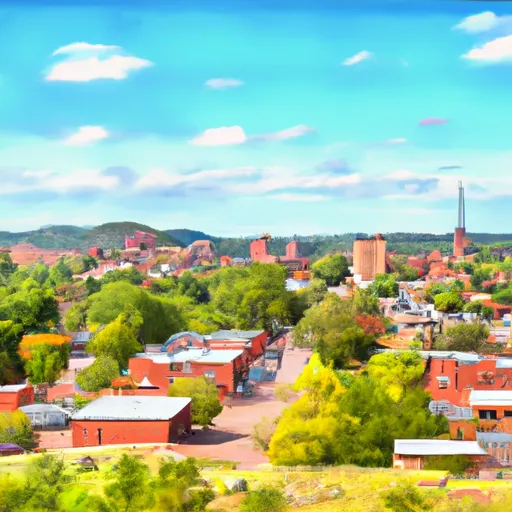-
 Snoflo Premium
Snoflo Premium
Get unlimited access to all our content
With no Ad interruptions! - Start Your Free Trial Login with existing account
Prescott
Eden Index
Climate
7.5
•
Recreation
3.6
•
Community
2.0
•
Safeguard
4.8/10

Prescott, Arkansas is a charming town located in the southwestern part of the state. Known for its mild climate, the area experiences hot and humid summers with temperatures reaching the upper 80s to low 90s (Fahrenheit) and mild winters with temperatures ranging from the upper 30s to mid-50s. The region receives an average annual rainfall of around 52 inches and is occasionally affected by severe weather, including thunderstorms and tornadoes.
Hydrology constituents in Prescott primarily revolve around the nearby Bodcau and Little Missouri Rivers. These rivers provide opportunities for various water-based activities, such as fishing, boating, and swimming. The Bodcau Wildlife Management Area, located nearby, offers additional recreational opportunities, including hunting and wildlife observation.
Outdoor enthusiasts will find numerous options for recreation in Prescott. The town is home to several parks and green spaces, such as Prescott City Park, which features playgrounds, picnic areas, and walking trails. Additionally, nearby Lake Greeson offers opportunities for camping, hiking, and water sports. Overall, Prescott offers a pleasant climate, diverse hydrology, and ample outdoor recreation opportunities for residents and visitors alike.
What is the Eden Index?
The Snoflo Eden Index serves as a comprehensive rating system for regions, evaluating their desirability through a holistic assessment of climate health, outdoor recreation opportunities, and natural disaster risk, acknowledging the profound impact of these factors on livability and well-being.
Climate Health Indicator (CHI): 7.5
Prescott receives approximately
1364mm of rain per year,
with humidity levels near 90%
and air temperatures averaging around
17°C.
Prescott has a plant hardyness factor of
8, meaning
plants and agriculture in this region tend to thrive here all year round.
By considering the ideal temperature range, reliable water supplies, clean air, and stable seasonal rain or snowpacks, the Climate Health Indicator (CHI) underscores the significance of a healthy climate as the foundation for quality living.
A healthy climate is paramount for ensuring a high quality of life and livability in a region, fostering both physical well-being and environmental harmony. This can be characterized by ideal temperatures, reliable access to water supplies, clean air, and consistent seasonal rain or snowpacks.
Weather Forecast
Streamflow Conditions
Upper Ouachita
Area Rivers
Upper Ouachita
Snowpack Depths
Upper Ouachita
Reservoir Storage Capacity
Upper Ouachita
Groundwater Levels
Recreational Opportunity Index (ROI): 3.6
The Recreational Opportunity Index (ROI) recognizes the value of outdoor recreational options, such as parks, hiking trails, camping sites, and fishing spots, while acknowledging that climate plays a pivotal role in ensuring the comfort and consistency of these experiences.
Access to outdoor recreational opportunities, encompassing activities such as parks, hiking, camping, and fishing, is crucial for overall well-being, and the climate plays a pivotal role in enabling and enhancing these experiences, ensuring that individuals can engage in nature-based activities comfortably and consistently.
Camping Areas
Nearby Ski Areas
Catastrophe Safeguard Index (CSI):
The Catastrophe Safeguard Index (CSI) recognizes that natural disaster risk, encompassing floods, fires, hurricanes, and tornadoes, can drastically affect safety and the overall appeal of an area.
The level of natural disaster risk in a region significantly affects safety and the overall livability, with climate change amplifying these risks by potentially increasing the frequency and intensity of events like floods, fires, hurricanes, and tornadoes, thereby posing substantial challenges to community resilience and well-being.
Community Resilience Indicator (CRI): 2.0
The Community Resilience Indicator (CRI) recognizes that education, healthcare, and socioeconomics are crucial to the well-being of a region. The CRI acknowledges the profound impact of these elements on residents' overall quality of life. By evaluating educational resources, healthcare accessibility, and economic inclusivity, the index captures the essential aspects that contribute to a thriving community, fostering resident satisfaction, equity, and social cohesion.

